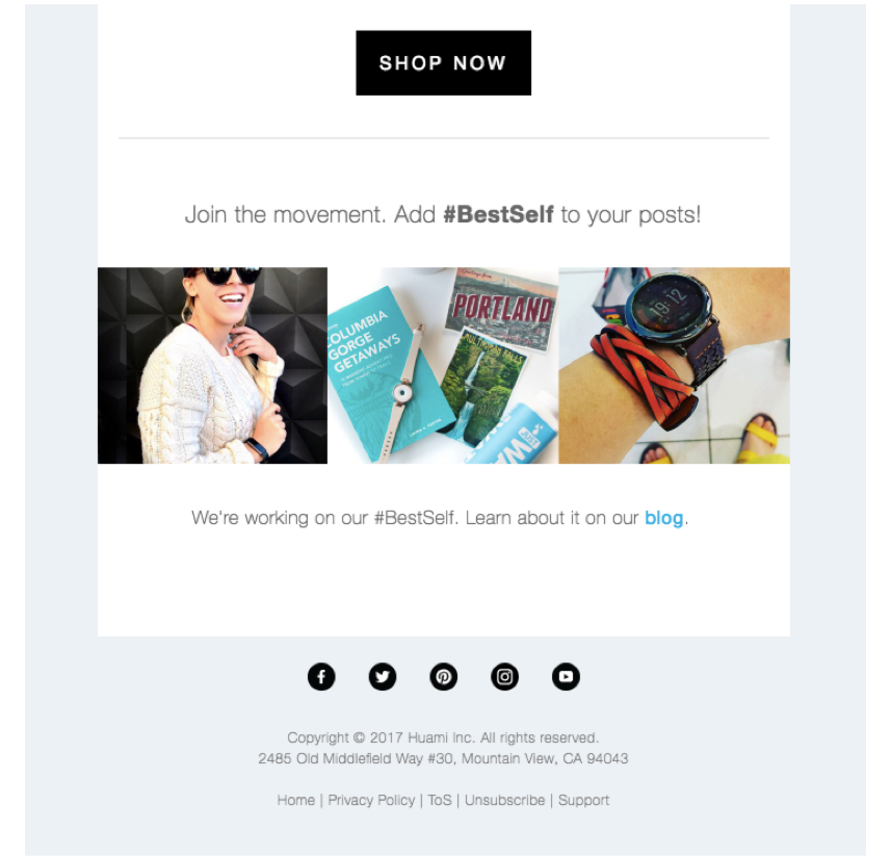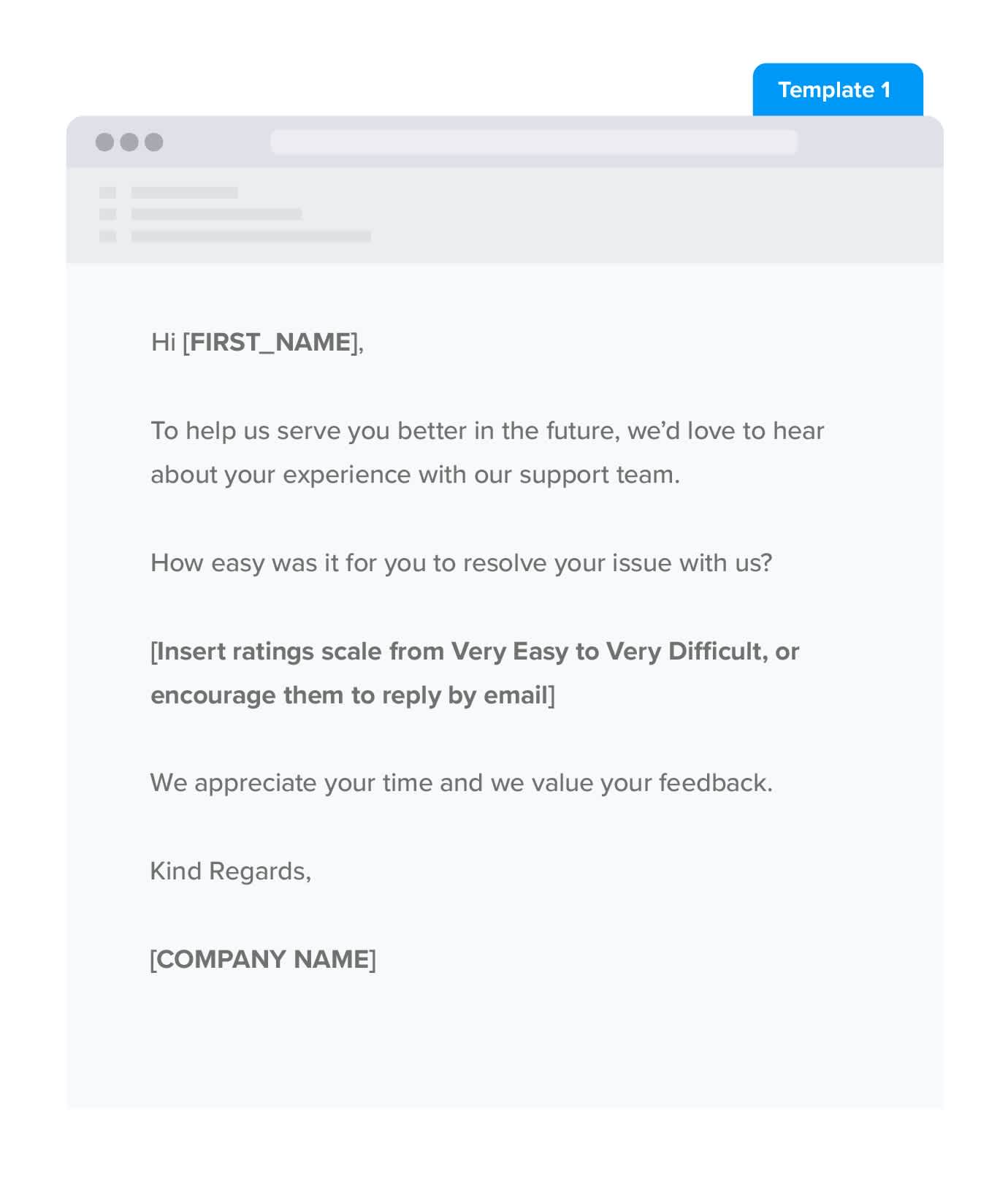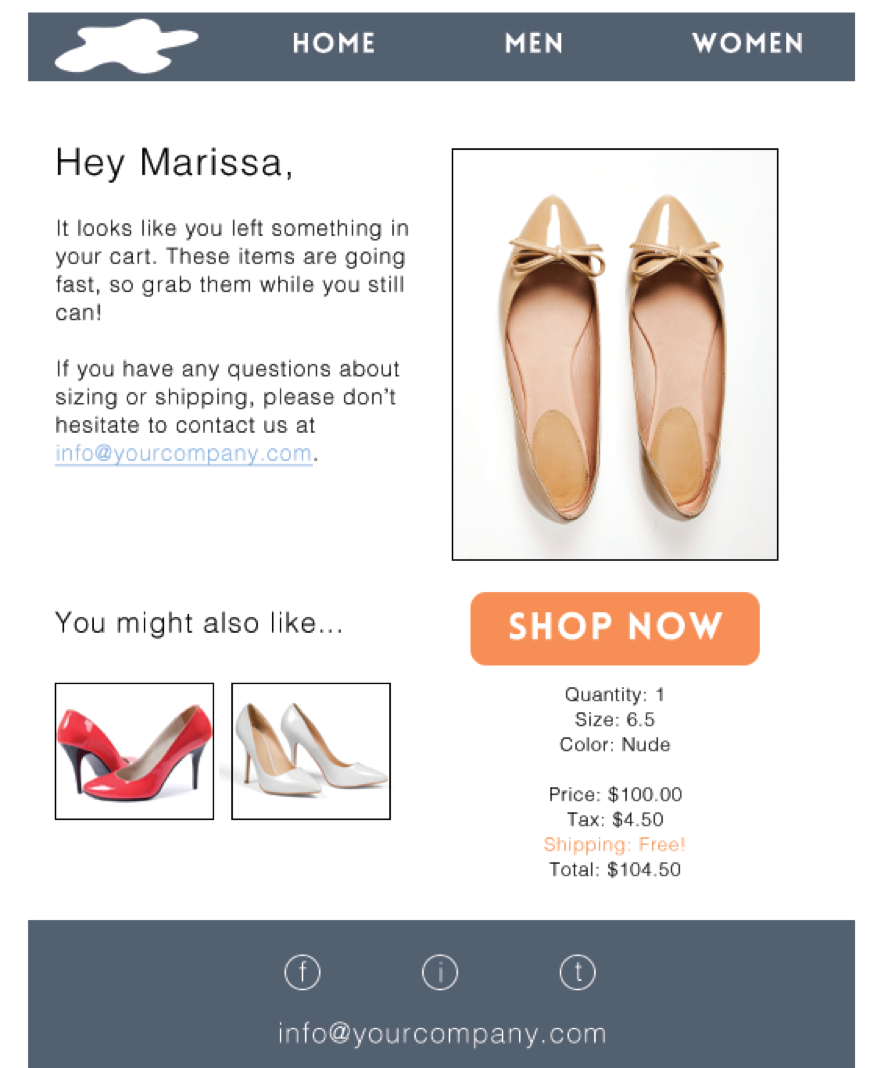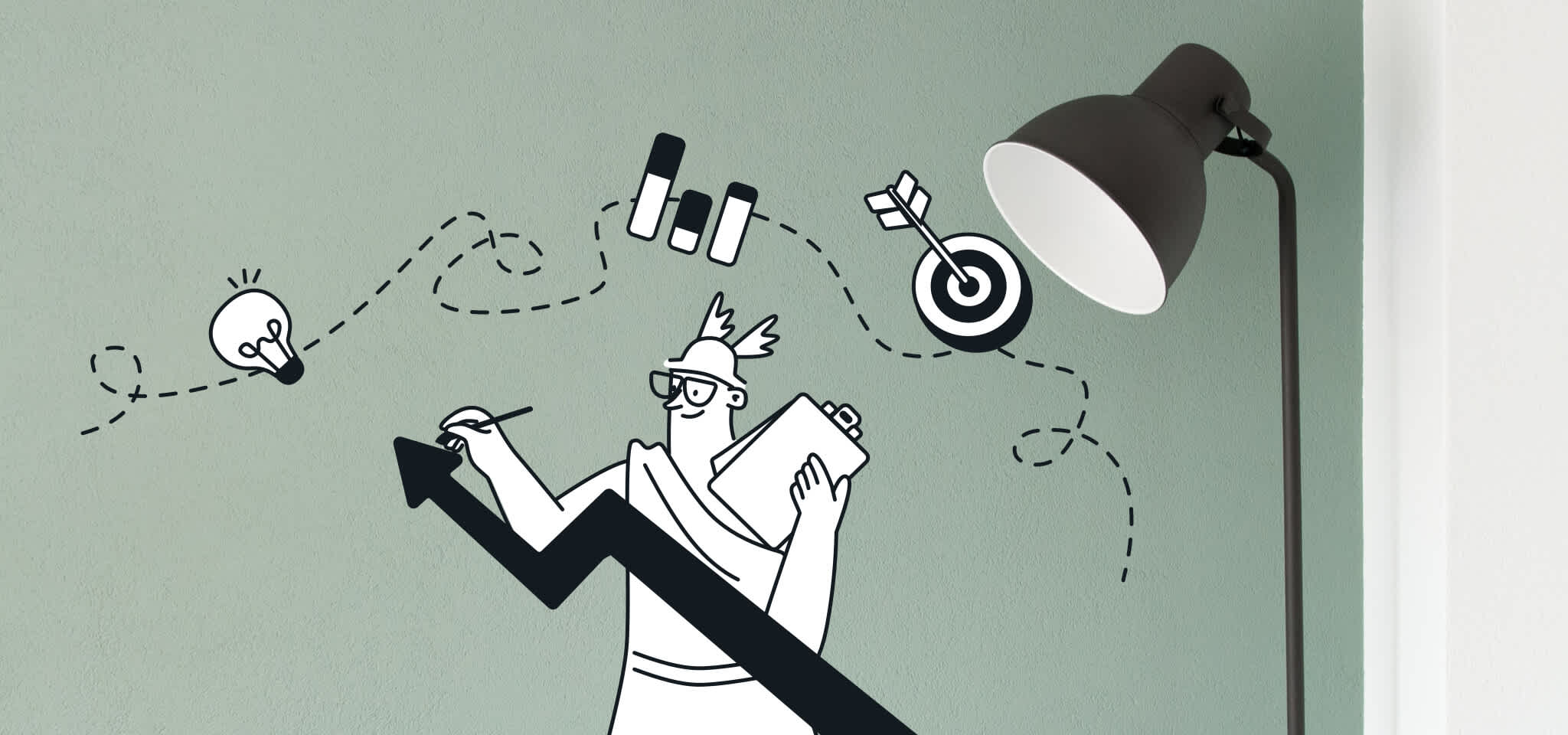Home
The Mailjet Blog
Email best practices
User-Generated Content: 6 Strategies To Incorporate UGC in Emails
Email Best Practicies
6 strategies to incorporate user-generated content in your email campaigns
User-generated content (UGC) has been a popular method of social media engagement, but it can also be a great way to boost email marketing.

PUBLISHED ON
Imagine this: You've been daydreaming about getting a new cardigan since you first listened to Taylor Swift's Folklore, and when you finally think you've found the one... it turns out it just doesn't look as well on you as it did on that model on the store's website. We've all been there, and it's not nice. If only there was a way to see how the item would actually look on real people...
Well, there is. User-generated content (UGC), or content shared by customers, has been a popular method of engagement on social media, but it can also be a great way to improve your customer experience and conversion rates. In this article from our friends at Venngage, we’ll explain how you can use it to your best advantage.
Table of content
UGC contests
Personalized content
Visual themes
Testimonials
Email remarketing
Community content
Content creation has evolved over the years to include more than just in-house content – user-generated content, sourced from customers, is now a major player in the field. Since brands often create emails from scratch or customize newsletter templates to their needs, how can user-generated content be used in an email marketing strategy?
While you can use emails to solicit UGC, you can also use UGC as the body copy of the email – here, we’ll look at the best methods to incorporate UGC in email campaigns.
Defining user-generated content
User-generated content is any type of textual and visual content created by users, either specifically for a business or for their enjoyment.
Companies can access UGC in numerous ways. They can encourage users to share content directly with the brand on social networks, or they can ask for permission to use pre-posted content. This is extremely important: appropriating content – or not giving proper acknowledgment to the original content creator – will negatively impact your brand’s reputation.
There are various ways in which brands can incorporate UGC in their visual communication strategy. We share the top six methods below.
Strategies to combine UGC and email
Here are six strategies you can try to start incorporating UGC to your email marketing campaigns.
UGC contests
Running UGC contests on social media is one of the most popular methods of collecting content. There are several types of Instagram or Facebook contests that can be run.
Contests can also be held on websites: brands can include a simple form and an opportunity to upload one’s content directly through the form. But what marketers don’t realize is that contests can also be promoted in emails and newsletters.
Write a segment about the hashtags and social media platforms where you are running the contest to inform users about how they can participate. Collecting visuals through contests works for several reasons – the denizens of the internet (often millennials and Gen Z influencers) love competitions.

Offering simple yet effective prizes – like a limited-time subscription to a digital loyalty program, discounts on products or services, or a small gift – increases the appeal of the contest. This added appeal can also help drive word-of-mouth marketing and help you receive more content entries.
Regardless of your prizes, you will likely receive a fair amount of entries when you announce the contest –sort through the entries for the ones that best fit your brand and feature those on your platforms and emails.
Personalized content
Personalization is a buzzword in the world of email marketing – if you aren’t personalizing your content for your customers, you are already behind in this game.
Look at the analytics from your subscribers and social channels - what are they clicking on in your emails? Which posts are more popular on social media, and receive the most likes, comments, and reposts? Which posts generate brand awareness and loyalty?
Correlate this data with your sales information – if you can break it down by user persona, you will have a really good idea about how to use your content strategy to target your audience. Once you have your user segments, you can send them emails with the type of content and visuals that are tailored for them, like this example from Netflix.

You have the option to include new content designed for these audiences, or to use popular social media posts that showcase the products that would appeal to them. Alternately, if your marketing team has already collected user-generated content across your website and social media channels, this is the time to use it to full effect.
By showcasing targeted UGC to the subscribers most inclined towards those products, you not only personalize your messaging but improve email deliverability and open rates.
Visual themes
Gathering user-generated content can be a challenge sometimes – it’s not just the quality of the content that you receive, but the relevancy that matters.
When you’re developing a campaign to showcase your products or services through UGC, you need to accept that not all the content you receive will be usable. Low-quality images, videos, or poorly-written reviews are fairly easy to parse through and reject – you can’t feature them on your channels without losing integrity and clicks, anyway.
It is the high-quality content that you need to examine. Just because a piece of UGC is of excellent quality does not mean that it adds value to your brand. The content you receive still needs to be relevant to your brand and the theme of your campaign.
Does the content align with your brand tone and voice? What about the color psychology of your campaign theme? It is up to you to ensure that users know exactly what you are asking for. With this in mind, it is worth trying to share some visual inspiration for your users – you may already have content from similar-themed original or UGC campaigns that you can use to drive entries.
Also, consider sharing content examples with a similar theme to give users an idea of the direction you’re going in. This will help you collate the right kind of content that you can use to build your brand via email marketing, and get the most out of your UGC marketing efforts.
Testimonials
Marketers often associate UGC with visual content but text-based content is just as relevant and attractive, especially when used in email marketing.
Reviews and testimonials are a great way for customers to showcase their enjoyment of your product or service and serves as encouragement to others to join in. A lot of marketing right now is focused on capitalizing on FOMO – the fear of missing out – and user testimonials have a major part to play in generating this feeling.
People don’t want to feel like others are enjoying opportunities or facilities that could improve their lives when they haven’t had the forethought to buy them. You can show people what they’re missing out on through UGC images and videos – visuals drive the point home more strongly. But a written testimonial gives the image context, and context matters in the world of content marketing.

With the right kind of wording, you can show users not only what they’re missing, but why they would benefit from having your helpful new product in their lives. Plus, don’t forget that a testimonial gives the visual content that much-needed human element. It’s not just a beautiful image they’re seeing, but the experiences of a real person.
There are many ways you can use testimonials in your email campaigns. Including reviews with images always works, but you can be more creative. A video testimonial from users will look authentic and fun. Try to use images of the customers alongside their reviews for maximum impact. This gives credibility to the idea of a positive customer experience and drives purchasing decisions from those who see your content.
Additionally, leverage the power of testimonials in your newsletters – and the same can be done on social media for a similar effect – to boost your email marketing clicks and sales.
Email remarketing
There is one thing marketers know for sure: the bulk of your sales are driven by repeat customers, not new customers.
While social media and attractive landing pages have a part to play in keeping your customers engaged, email marketing is the best method to establish a consistent dialogue. Using the marketing analytics we mentioned earlier, you can learn what your customers are buying, how often, and even for what reason.
With that information at hand, emailing them at the right time becomes a process you can automate to share with them UGC that shows products that would suit them now. Email remarketing can also be used to turn abandoned carts into sales – emailing your customers within the same day that they failed to complete their purchase can result in sales.

Share UGC of people wearing and recommending the products they failed to buy to encourage them to convert their abandoned cart into a sale. While you can do the same using professionally photographed models, it doesn’t have the same appeal as a regular user recommending the product.
This is where the importance of putting a human face to a brand comes in, so you can leverage UGC to create sales where there were none, and increase your retention and conversion rates.
Community content
Building a community has become the lynchpin of digital marketing. Brands don’t exist on an island – they need their fans, followers, and customers to build them up via word-of-mouth, positive product reviews, and repeat purchases.
The power of your community can make email marketing campaigns a massive success… if you understand how to leverage them to convert prospects into customers. You should be looking to your community to source UGC with a purpose. Not only will you get the quality content you need to create an attractive newsletter, but you will also promote sales.
Using community content is a bit like reverse engineering your marketing – instead of encouraging people to buy items that are similar to what they’ve bought before, do the opposite, like this Bellroy newsletter highlighting bestsellers.

When sourcing content from your community, you will get an idea of which items were most popular. Use that as the theme for your next email, and link subscribers to relevant product pages and additional details. Tell your audience what was popular within your community to capitalize on FOMO, and boost sales for items among a varied audience segment.
Conclusion
User-generated content can be used to create attractive newsletters that add a human touch to your email marketing campaigns. Additionally, by incorporating content created by existing customers in your emails, your brand builds a sense of trust and authenticity that will boost clicks and conversions.
We have outlined the best practices for soliciting UGC and using it in your newsletters – by following a combination of the above methods, you can create engaging content, boost personalized consumer engagement, and build a loyal customer community.
Want to start sending amazing emails right now?Create stunning campaigns for the most important marketing moments in 2021 with our drag-and-drop email editor and reach your contacts’ inbox with first-class deliverability.
Want to receive marketing tips, tricks, and best practice in your inbox every week? Sign up for our marketing newsletter here!
***
This post was written by Ronita Mohan. Ronita is a content marketer at Venngage, the online infographic maker and design platform. Ronita enjoys writing about content marketing, productivity, pop culture, and representation.








